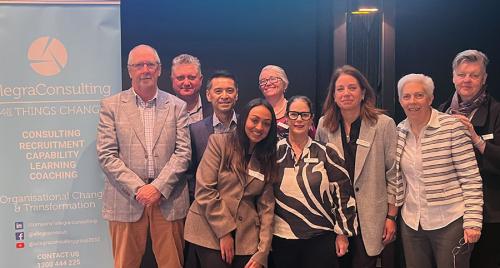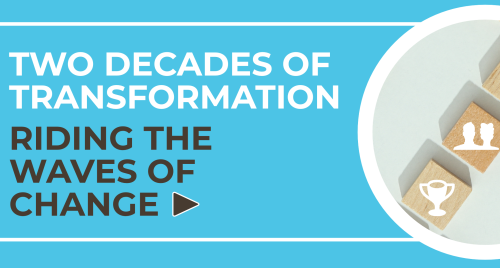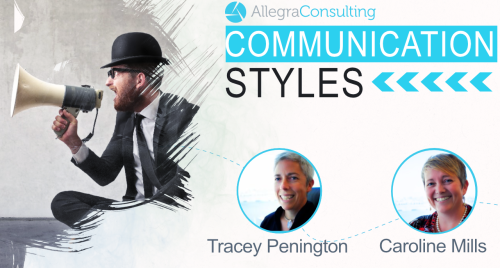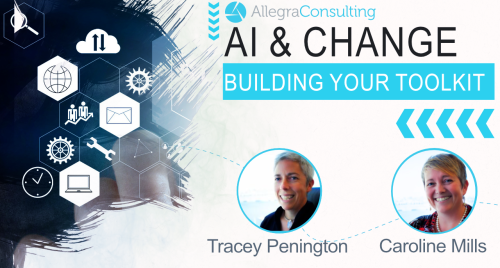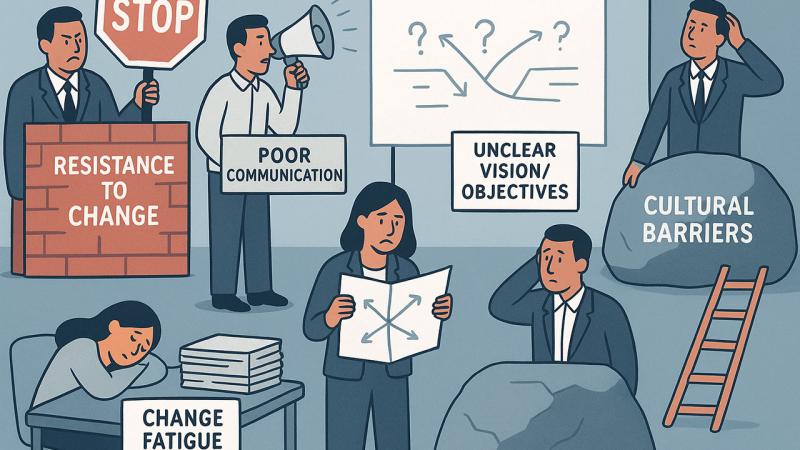
Are We Aligned Yet? The Top Change Challenges Heading Into 2026
Ever been part of a group hike where everyone agrees on the destination - but half the team’s already powering up the hill while the rest are still packing their bags?
That's what 2025 has felt like for many organisations - a shared sense of direction, but very different paces, priorities, and levels of readiness.
The world is moving faster than ever. Market conditions shift overnight, customers expect constant evolution, and AI continues to rewrite how work gets done. Amidst all this, organisations are discovering that delivering change is no longer the problem - it's sustaining it.
Here's what the Heads of Change group we host called out as the biggest challenges of the year - and what they tell us about what's ahead for 2026.
1. Leadership Alignment: When the EGMs Take Off Without the Rest of the Team
We've all seen it. The executive team signs off on a significant transformation; the consultants map out the future state, and the slides sparkle with promise… and the rest of the organisation stands there, wondering what just happened.
Leadership alignment isn't about agreement on paper - it's about shared ownership of the journey. Too often, decisions are made at the top without ensuring that leaders further down the chain are engaged, aligned, and equipped to lead their people through the transition.
The group discussed using the Stakeholder Commitment Curve to identify where individuals truly stand - awareness, understanding, buy-in, or commitment - and deliberately plan how to move them along.
Because when key leaders are sitting in "neutral" or "resistance" zones, the organisation feels it instantly.
If leadership alignment is the engine of change, then the commitment curve is the fuel gauge - and far too many organisations are running on empty.
2. Constant Reprioritisation: The Spinning Plates Problem
There's a joke doing the rounds in change circles: "Our strategy is whatever survived this quarter's reprioritisation meeting."
Between AI, market shifts, cost pressures, and digital ambitions, organisations are juggling more plates than ever - and dropping quite a few. Projects are being paused mid-flight, new ones take their place, and the workforce is left dizzy from the constant spin.
This "permanent pivot" mode might feel agile, but it's eroding trust. Teams stop believing that anything will land. It's like building a house while someone keeps moving the foundations - even the best builders can't pour concrete on shifting ground.
The challenge for 2026 will be creating focus and stability long enough for change to take root, even in volatile environments.
3. Keeping Change on the Executive Agenda
"Why are we talking about this again?" one exec reportedly asked during the discussion.
Because the work isn't done.
It's a classic Bridges Transition Model scenario - those closest to the decision have already crossed the bridge to the "new beginning," while everyone else is still wandering through the foggy middle.
Executives naturally move on fast; their context changes first. But the rest of the organisation needs time - time to unlearn, relearn, and embed. When change drops off the executive agenda too soon, it signals to the business that the change has finished - when in reality, that's when adoption work truly begins.
The message was clear: keep change visible. Celebrate progress, talk about lessons, report on adoption and engagement - not just milestones and costs. Because if it's not on the agenda, it's not a priority.
4. Executive Turnover and Sponsorship Gaps
If leadership alignment is the engine, sponsorship is the steering wheel - and right now, many organisations are driving with one hand off.
Frequent executive turnover in the current business environment means sponsors change mid-stream. The new leader arrives, brings fresh ideas, and sometimes an entirely different direction. The sponsorship energy drains, governance resets, and teams lose momentum.
The heads of change agreed: we need to treat sponsorship like a role to be managed, not a name on a chart.
Track engagement. Coach new sponsors quickly. Build layers of sponsorship so that when one leaves, the structure holds.
Because when the sponsor disappears, the project doesn't pause - but the belief in it often does.
5. Change Fatigue and Saturation: The "Too Much at Once" Epidemic
If 2024 was acceleration, and 2025 was survival, then 2026 might well be the year organisations hit the wall.
Leaders and employees are reporting burnout, depleted engagement, and "change deafness" - where teams can't absorb another initiative, no matter how well-crafted.
The same SMEs are being stretched across multiple transformations, becoming bottlenecks not by choice, but by necessity.
Several participants highlighted governance forums that review change saturation and use heatmaps to visualise impact and collisions. These data-driven conversations help leaders see when the organisation's reach has exceeded its grasp.
As one participant put it: "It's like trying to land too many planes on one runway - eventually, something's going to run out of fuel."
In 2026, expect to see more organisations using these heatmaps to regulate pace, protect capacity, and make the invisible load visible.
6. Transformation Agenda Size: Big Ambitions, Small Oxygen
TOM redesigns, AI pilots, automation pipelines, digital experience overhauls - the transformation portfolios are enormous.
But when everything is a priority, nothing is.
The challenge isn't vision - it's realism. The expectation that people will self-regulate, remain productive, and stay engaged through large-scale restructures and uncertainty is proving to be a dangerous illusion.
Even with retention bonuses, empathy is waning towards employees whose jobs are eliminated in restructures - and when empathy disappears, trust and turnover inevitably follow.
Change doesn't fail because people resist it. It fails because people are exhausted by it.
The transformation agenda for 2026 needs more oxygen - not more ambition.
7. AI Platforms and the Trust Gap
AI has been the headline act of 2025 - but it's a story still being written.
While the technology continues to evolve, trust in it hasn't quite caught up. Teams are struggling with data quality, governance, AI platforms are still learning and not always getting the correct output, and there's a more profound anxiety about what AI means for job security.
The insight from the Heads of Change was simple: you can't automate belief.
Change adoption for AI isn't just about capability - it's about comfort.
People need to see, test, and trust before they'll engage.
As these platforms mature, leaders must focus just as much on human readiness as they do on technical readiness.
8. The "Change Black Market"
And then there's the underground movement - the rise of "adoption managers" and unofficial change leads out in the business.
Some see them as rogue operators; others view them as an inevitable part of the future, where there are large change agendas and insufficient change resources.
This so-called "change black market" has emerged because the need for change support has outpaced the number of formal change professionals. These adoption roles often fill gaps - helping to embed, communicate, and sustain change where the formal function can't reach.
The consensus? Let's not treat them as competitors - let's treat them as allies, while also ensuring that leaders in the business understand that adoption is ultimately their responsibility.
Adoption isn't a side hustle; it's the outcome of every good change initiative.
When the business starts building its own change capability, that's not a threat - that's success.
So… What Does 2026 Demand of Us?
If 2025 was about keeping up, 2026 will be about slowing down to land what matters.
Change leaders will need to:
- Focus on depth over breadth - fewer changes where possible, better embedded.
- Rebuild trust - between leaders, teams, and technology.
- Protect capacity - making invisible workloads visible.
- Strengthen leadership alignment and sponsorship continuity.
- Bring back empathy - not as a buzzword, but as a leadership discipline.
Because at the end of the day, sustainable change isn't about how many initiatives we launch - it's about how many truly stick.
As one participant summed it up beautifully: "Our reach is exceeding our grasp. 2026 needs to be the year we grasp what truly matters."





